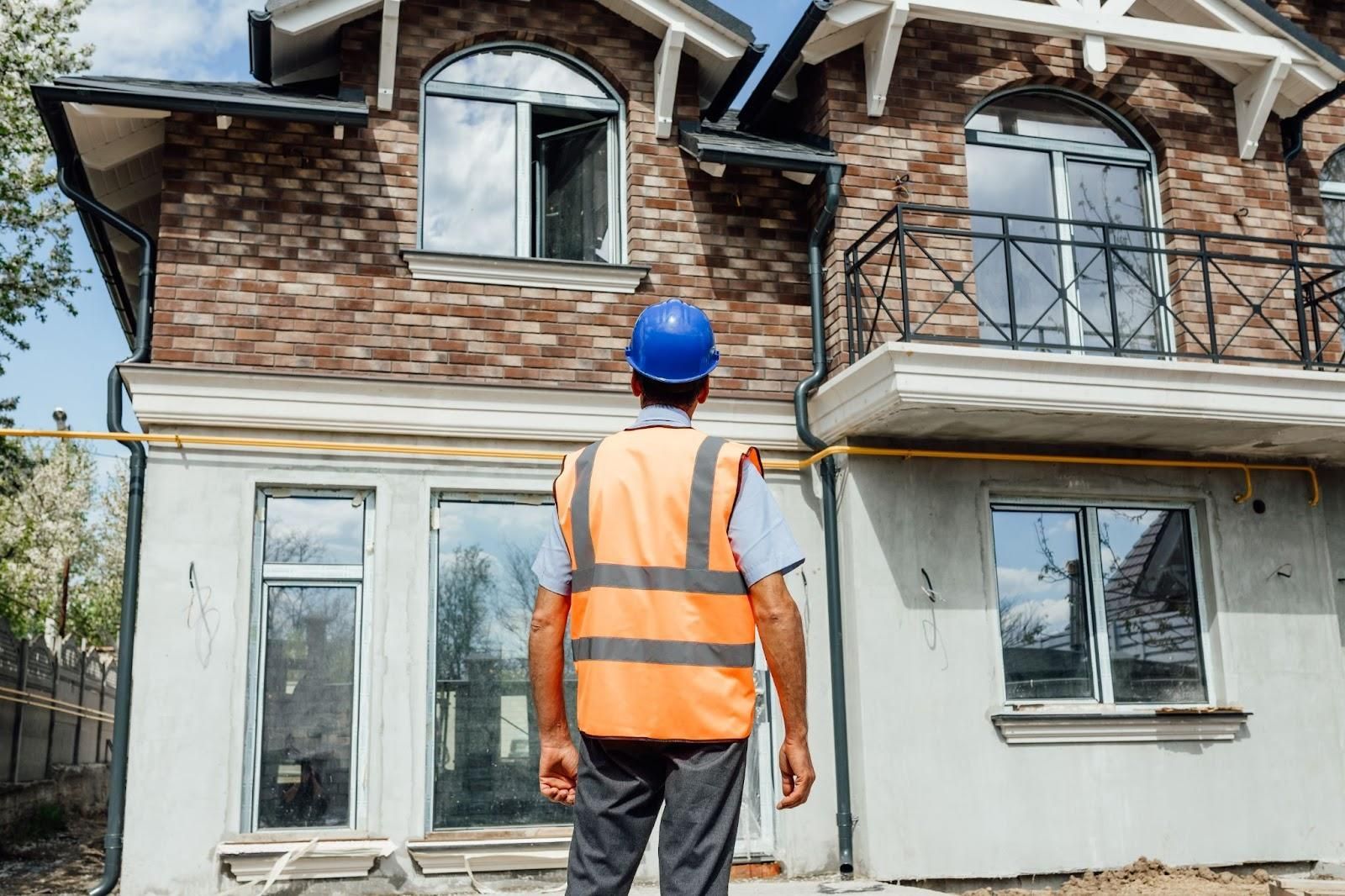Final Walk-Through: Ensuring Your New Home is Ready
The importance of a final walk-through before closing can't be overstated. Here's why it's vital:
- Verify Repairs: Ensure the seller completed agreed repairs.
- Check Condition: Confirm the property's condition is the same as when you last saw it.
- Avoid Surprises: Spot any unexpected issues before it's too late.
When you're in the last stretch of the home buying process, emotions can run high. The excitement of stepping into your new home is matched by the intensity of ensuring everything is in order. This is where the final walk-through comes into play—it's the last step where an essential property inspection takes place.
Think of this as your last quality check. It's your chance to walk through the home, examine repairs, and ensure no new issues have appeared since your last visit. Before you become the official homeowner, use this opportunity to catch any problems and address them with the seller.
In the Greater Houston area, ensuring your home is ready is critical. Reliable inspection services, like those from Accurate Home and Commercial Services, can be invaluable. They provide the expertise and thoroughness needed to help you make sure your new home is safe, accessible, and free from pests.
The Importance of a Final Walk-Through Before Closing
The final walk-through is a crucial step in the home buying journey. It's your last chance to ensure that everything is as expected before you close the deal. Here’s why this step is so important:
Confirm Repairs
One of the primary reasons for a final walk-through is to verify that any repairs agreed upon in the purchase contract are completed. Imagine you requested the seller fix a leaky faucet or replace a broken window. It's essential to check these repairs to avoid future hassles. If something isn't fixed, this is the time to address it.
Check for New Issues
Homes can change, even in a short time. During the final walk-through, look for any new problems that might have arisen since your last visit. This could include water damage from a recent storm or issues caused during the seller's move-out process, like scratched floors or chipped walls.
The Buyer's Last Chance
The final walk-through is not just a formality—it's the buyer’s last chance to ensure the property is in the agreed-upon condition. If you spot significant issues, you have options: delay closing, renegotiate terms, or even request an escrow holdback to cover repair costs.
In the Greater Houston area, where Accurate Home and Commercial Services operates, these inspections are vital. They ensure that your new home is not only beautiful but also safe and ready for you to move in. Reliable inspection services provide peace of mind, knowing your investment is protected.
By conducting a thorough final walk-through, you can confidently proceed to the closing, knowing that your new home is exactly what you expected.
Common Issues to Look For
During the final walk-through, focus on spotting common issues that could lead to headaches later. Here's what to check:
Appliance Testing
Ensure all appliances are in working order. This includes the stove, refrigerator, dishwasher, washing machine, and dryer. Run each appliance through a cycle or test its basic functions. For example, turn on the oven and make sure it heats without unusual smells. Run the dishwasher with a dirty dish to check its cleaning efficiency. A quick test now can save you from costly repairs later.
Water Damage
Water damage can be a sneaky problem that leads to big expenses. Inspect for signs of water damage around sinks, toilets, and showers. Look under sinks and around the bathtub for mold or dampness. Check ceilings and walls for water stains, which might indicate a hidden leak. Water damage isn't just about aesthetics—it can impact the home's structural integrity.
Pest Infestation
Nobody wants uninvited guests in their new home. Look for signs of pest infestation during your walk-through. Check for droppings, nests, or gnaw marks, especially in less visible areas like basements or attics. Pests can cause damage and health issues, so it's crucial to catch them early. If you notice any signs, consider bringing in a professional pest control service before moving in.
By identifying these common issues, you can address them before closing, ensuring a smooth transition into your new home.
Timing and Preparation for the Walk-Through
Scheduling your final walk-through at the right time is crucial. Aim to conduct it one to two days before closing. This timing ensures that any issues you find can be addressed without delaying the closing process. Ideally, the sellers should have moved out, leaving the property clean and ready for inspection.
Checklist Preparation
Before you head to the walk-through, prepare a comprehensive checklist. This will help you stay organized and ensure that you don't overlook any critical areas. Some essential items to include are:
- All promised repairs completed: Verify that any agreed-upon repairs have been done to your satisfaction. Bring your home inspection report to cross-check these repairs.
- Appliance and fixture operation: Test all appliances and fixtures, including lights, faucets, toilets, and HVAC systems. Make sure they function correctly.
- Signs of new damage: Look for any new damage that might have occurred during the seller's move-out process, such as scuff marks or chipped paint.
- Inclusion of sale items: Ensure that all items included in the sale, like window treatments or kitchen appliances, are still present.
Documentation
Bring essential documents with you to the walk-through. These should include:
- Home purchase agreement: This outlines what you and the seller agreed upon, including repairs and items to be left behind.
- Home inspection report: Use this to verify that previous issues have been addressed.
- A camera or smartphone: Take photos or videos of any concerns you find. This documentation can be helpful if you need to negotiate repairs or concessions with the seller.
Having your real estate agent present during the walk-through can be beneficial. They can provide guidance and ensure that nothing is missed. If you're unable to attend, consider arranging a trusted friend or family member to go in your place, or explore virtual walkthrough options as a backup.
By preparing thoroughly, you set yourself up for a smooth and successful final walk-through, minimizing surprises when you finally step into your new home.
What to Do If Issues Are Found
During a final walk-through, finding issues can be frustrating, but it's not the end of the world. Here’s what you can do if things aren't as expected:
Delay Closing
If significant problems arise, consider delaying the closing. This option gives the seller time to address the issues. For instance, if a major repair like fixing the basement electrics hasn't been completed, a delay might be necessary. Some title companies and attorneys may also recommend this. Closing is a crucial step, and it's better to ensure everything is in order rather than rushing through.
Renegotiate the Contract
In some cases, rather than delaying, you might renegotiate the contract. This could involve asking the seller for a financial concession to cover the cost of repairs. As Jason Gelios, a Realtor, suggests, "Most sellers are open to making things right at this stage of the process." If the repair costs are minor, like $100 or so, a concession could be a straightforward solution.
Escrow Holdback
Another option is to use an escrow holdback. This involves holding a portion of the seller's proceeds in escrow until the repairs are completed. This is a neutral way to ensure the seller follows through on their commitments. It's particularly useful for costly repairs that require more time. The escrow funds are released once the buyer confirms the repairs are satisfactorily completed.
Open communication with the seller is key. Discussing issues promptly and clearly can lead to amicable solutions. Most problems can be resolved with negotiation, ensuring both parties are satisfied and the sale proceeds smoothly.
Frequently Asked Questions about Final Walk-Throughs
Can I Bring My Family or Friends to the Final Walkthrough?
Yes, you can definitely bring family or friends to the final walkthrough. Having another set of eyes can be helpful. They might notice things you might miss. Plus, sharing this important moment with loved ones can provide valuable feedback and support. Just remember to keep the group small to maintain focus and efficiency.
What Should I Do if I Can’t Attend the Walkthrough?
If you can't make it to the walkthrough, don't worry. You have options. Consider asking a trusted friend or family member to attend on your behalf. Virtual walkthroughs are also a great alternative. Many real estate agents offer video calls, allowing you to see the property in real time and discuss any concerns directly. This way, you won't miss out on this crucial step.
Are There Any Fees Associated With the Final Walkthrough?
Typically, there are no direct fees for the final walkthrough itself. However, be aware of closing costs, which might include various expenses. It's essential to review your agreement carefully and consult with your agent to understand any potential charges. This ensures there are no surprises when you finalize the deal.
Conclusion
The importance of a final walk-through before closing cannot be overstated. It ensures that your new home is ready for you and meets your expectations. This step is crucial for confirming that all agreed-upon repairs are complete and that no new issues have arisen since your last visit. It’s the final checkpoint before you officially become a homeowner.
Accurate Home and Commercial Services, based in Conroe, TX, understands the significance of this process. They offer comprehensive home inspection services throughout the Greater Houston area, ensuring that every detail is thoroughly checked. Their experienced team is dedicated to providing you with the peace of mind that your property is safe and ready for move-in.
Customer satisfaction is at the heart of their services. By choosing Accurate Home and Commercial Services, you can be confident that your final walk-through will be thorough and detailed. Their attention to detail and commitment to excellence help ensure that your new home meets your standards and expectations.
To learn more about how Accurate Home and Commercial Services can assist you with your home inspection needs, visit their home inspections page. Your journey to a smooth and successful home purchase starts with a reliable and detailed inspection.











